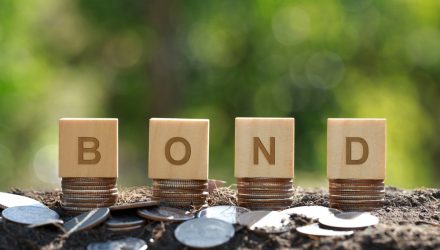Equities performed well in May, boosting a variety of exchange traded funds, including those rooted in environmental, social, and governance (ESG) principles. However, inflows data indicate that ESG bond funds were the winners in the fifth month of the year.
While equity-based funds remain the kings of the ESG space in terms of assets under management, their fixed income counterparts took the inflows crown last month, according to recently published data from Barclays Research. One month is just that — one month — but budding enthusiasm for ESG bond funds could provide ballast to ETFs such as the Calvert Ultra-Short Investment Grade ETF (NYSE Arca: CVSB).
“In May, ESG-labeled bond funds had net inflows just over $3 billion, a threefold increase from April levels. Those inflows were similar to inflow increases for the broader bond fund universe, the report said,” reported Hazel Bradford for Pensions & Investments.
Through the end of May, year-to-date inflows to ESG bond funds totaled $15 billion. That’s not a massive number, but it’s ahead of the 2022 figure and one that could imply that more advisors and investors are considering strategies such as CVSB.
Maybe Good Timing for CVSB
As part of a broader suite of Calvert ESG ETFs, CVSB debuted in late January. While some rookie ETFs go overlooked due to lack of age, it’s possible that the same won’t be true of CVSB because of its status as an ESG bond fund.
May’s flow data indicate that market participants were particularly keen on emerging markets and corporate credit ESG strategies, with the latter being relevant to CVSB because the ETF features significant exposure to high-quality corporate bonds.
“ESG bond fund inflows were roughly four times the level seen in 2022, but one-third of 2021 levels, which were roughly $44 billion, according to the research,” added Pensions & Investments, citing Barclays.
CVSB is pertinent for other reasons beyond investors’ affinity for ESG bond funds. The ETF’s duration is just 0.65 years. That’s an important trait at a time when there’s considerable debate regarding the Federal Reserve’s interest rate plans for the upcoming June meeting. With jobs growth stout and inflation still high, the central bank may have no choice but to raise rates again, likely pinching longer-dated bonds in the process.
That’s not the only reason CVSB’s status as a short-duration ETF is noteworthy. Short and ultra-short duration bonds and the related funds are usually the least volatile fixed income instruments, indicating that CVSB can provide some volatility reduction to investor portfolios.
For more news, information, and analysis, visit the Responsible Investing Channel.

